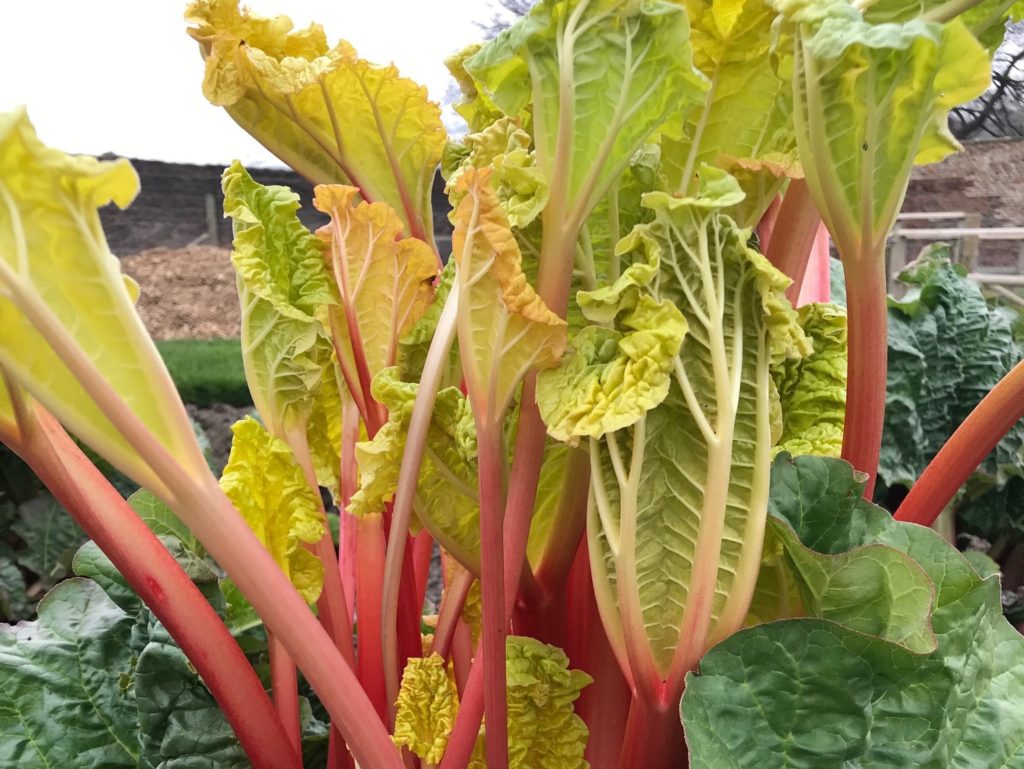 Maria Mahon, kitchen gardener in Harewood’s Walled Garden gives an insight into this easy to grow and long lasting crop – rhubarb.
Maria Mahon, kitchen gardener in Harewood’s Walled Garden gives an insight into this easy to grow and long lasting crop – rhubarb.
It’s that time of year when rhubarb is starting to grow and those delicious crimson stems can be seen gradually emerging from the soil, stretching and unfurling their young green leaves as if waking up from a long winter sleep. Allotment holders and vegetable gardeners alike will be looking forward to all the scrumptious culinary ways in which to use this famous Yorkshire delicacy.
During the Victorian era and right through to the end of the 2nd World War, rhubarb became very popular as growers discovered how to achieve an early crop of deep pink, tender stems through a technique known as forcing. Forcing involves tricking the plants into thinking spring has arrived. Planting them in dark heated sheds during the winter months, the plant searches for light and as it does so, the stems become thinner and less fibrous than those grown out in the field.
Growers in Yorkshire led the way when it came to growing rhubarb, and most folk have heard of the Rhubarb Triangle (Leeds, Bradford and Wakefield). However, during the 1950s demand for rhubarb went into decline as more exotic fruits became readily available from overseas.
So, how easy is it to grow rhubarb? Very easy is the answer.
Rhubarb requires very little maintenance other than an application of a general purpose fertiliser around the crowns once the harvesting season is over and an annual dressing with well-rotted compost or manure in January or February.
It needs a sunny spot with well-drained soil and so long as it is kept well watered, will provide delicious stalks ready for harvesting every 6-8 weeks during spring and summer, depending on the variety.
The easiest way to introduce rhubarb is to plant crowns and we were very generously donated some crowns from RV Rogers nursery at Pickering. Whilst November is the ideal time to plant crowns, they can still be planted right up until early spring if the ground isn‘t frozen.
Rhubarb is a vegetable rather than a fruit and a lot of people mistakenly think that the colour of the stalk indicates its ripeness. In fact, it is quite the contrary, the more time the stalk spends growing before it is picked, the tougher and more fibrous the stalk gets as it photosynthesises, so it is good to pick the stalks regularly.
We’ve a good crop on display now in the Walled Garden and hope to see some fine samples on the Courtyard Café menu in the next week or so, any perhaps for sale in the Courtyard shop.